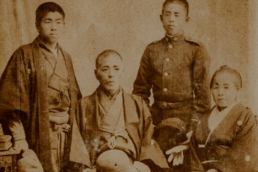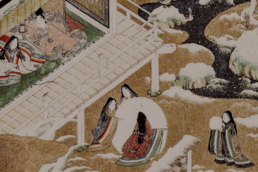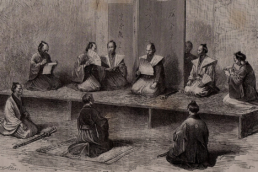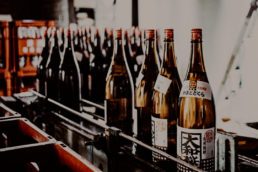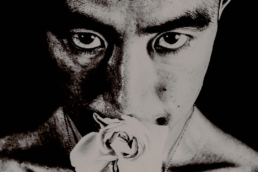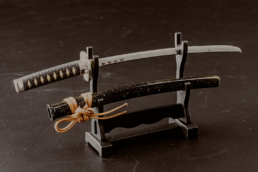Japan History: Saitō Hajime
Saitō Hajime (Yamaguchi Hajime, February 18, 1844 – September 28, 1915) was a Japanese samurai of the late Edo period, who served as the captain of the third unit of the Shinsengumi. He was one of the few core members who survived the numerous wars of the Bakumatsu period. He was later known as Fujita Gorō and worked as a police officer in Tokyo during the Meiji Restoration.
Saitō Hajime of the third unit of the Shinsengumi
Author: SaiKaiAngel

photo credits: wikipedia.org
He was born in Edo, Musashi Province (now Tokyo) as Yamaguchi Hajime and he had an older brother named Hiroaki and an older sister named Katsu. According to the published records of his family, Saitō left Edo in 1862, after accidentally killing a hatamoto (a samurai in the direct service of the Tokugawa shogunate of feudal Japan).
He went to Kyoto and taught in the dōjō of a man named Yoshida who had relied on Saitō's father Yūsuke in the past. His style of swordsmanship is not clear. According to a tradition of his descendants, his style comes from Ittō-ryū and to be a Mugai Ryū that originates from Yamaguchi Ittō-ryū. He is also considered to have learned Tsuda Ichi-den-ryū and Sekiguchi-ryū.
He adherently lived by the Shinsengumi code "Aku Soku Zan" ( literally: "Slay Evil Immediately", but more poetically rendered as "Swift Death to Evil"), though he never has shown much regard for human life, at some points even letting on that he likes to kill. He was rather arrogant, but none of these flaws prevent him from being a superb investigator and fighter. He expected those involved in the military, whether Shinsengumi swordsmen or Meiji era policemen, to carry out their duties without letting their personal feelings interfere.
He believed in peace and order, even in the society created by his former enemies. Throughout the series, to uphold this new peace, Saitō has often been shown as the foil of Himura Kenshin who walks and carries out his duties in the shadows of society in his own way; following his lifelong code of purpose with devotion, Saitō was the man who did the dirty work, killing off the bad persons. Anyone he considered to be corrupt or despotic was a target for elimination, in the honor of his country and his fallen men.
Even if he was normally serious, Saitō had a slight sense of humor that is also a lot sadistic, shown as he used his sword to casually attempt to stab Sanosuke Sagara in the butt through the roof of the horse carriage they were riding with Himura Kenshin.
During the Kyoto Arc, Saitō joined forces with Himura Kenshin to fight against Shishio Makoto. However, he considered Kenshin to be more of an adversary rather than an ally. Later, after acknowledging Himura Kenshin’s vow to never kill again, Saitō decided to put an end to their rivalry.
Saitō was an able observer and a quick analyst (working as a spy for the Meiji government). In addition to being a skilled swordsman, he is revealed to possess immense physical strength when he punched the herculean Sagara Sanosuke in a hand-to-hand fistfight. He considered Sanosuke to be a dimwitted amateur with mild potential, due mostly to Sano's lack of insight.
Saitō was highly recognizable by his narrow eyes, "spider-like" strands of hair in front of his forehead (he was also said to resemble a wolf), his propensity for smoking and the katana on his left side.
Shinsengumi Period
As a member of the Shinsengumi, Saitō was said to be an introvert and a mysterious person; a common description of his personality says he " he was not a man predisposed to small talk" but unusually tall 180 cm. He was also noted to be very dignified, especially in his later years, he always made sure that his obi was tied properly and when he walked he was careful not to drag his feet and he always sat in the formal position, called seiza. He also was very alert so that he could react instantly to any situations that might occur.
He was known to be very intimidating when he wanted to be. Along with his duties as Captain of the Third Squad in the Shinsengumi, he was also responsible for weeding out any potential spies within the Shinsengumi ranks.
His original position within the Shinsengumi was assistant vice commander. During the Ikedaya incident on July 8, 1864, Saitō was with Hijikata Toshizō's group that arrived later at the Ikedaya Inn.
In August 20, 1864, Saitō and the rest of the Shinsengumi took part in the Kinmon incident against the Chōshū rebels. In the reorganization of the ranks in November 1864, he was first assigned as the fourth unit's captain and would later receive an award from the shogunate for his part in the Kinmon incident.
At the Shinsengumi new headquarters at Nishi Hongan-ji in April 1865, he was assigned as the third unit's captain. Saitō was considered to be on the same level of swordsmanship as the first troop captain Okita Sōji and the second troop captain Nagakura Shinpachi. In fact, it seems that Okita feared his sword skill.
Despite prior connections to Aizu, his descendants dispute that he served as a spy. His controversial reputation comes from accounts that he executed several corrupt members of the Shinsengumi; however, rumors vary as to his role in the deaths of Tani Sanjūrō in 1866 and Takeda Kanryūsai in 1867. His role as an internal spy for the Shinsengumi is also questionable; he is said to have been instructed to join Itō Kashitarō's splinter group Goryō Eji Kōdai-ji faction, to spy on them, which eventually led to the Aburanokōji incident in December 13, 1867.
Together with the rest of the Shinsengumi, he became a hatamoto in 1867. In late December 1867, Saitō and a group of six members of the Shinsengumi were charged with protecting Miura Kyūtarō, who was one of the main suspects in the murder of Sakamoto Ryōma. On January 1, 1868, they fought against sixteen assassins who tried to kill Miura in revenge at the Tenmaya Inn for what was known as the Tenmaya incident.
After the outbreak of the Boshin war from January 27, 1868 onwards, Saitō, under the name of Yamaguchi Jirō, participated in the Shinsengumi's fight during the battle of Toba-Fushimi and the battle of Kōshū-Katsunuma, before retiring with the surviving members in Edo and later in the domain of Aizu.
Saitō became commander of the Aizu Shinsengumi around May 26, 1868 and continued in the battle of Shirakawa. After the battle of Bonari Pass, when Hijikata decided to withdraw from Aizu, Saitō and a small group of 20 members separated from Hijikata and the rest of the surviving Shinsengumi, continued to fight alongside the Aizu army against the imperial army until the end of the battle of Aizu. This separation was recorded in the diary of the conservative Kuwana Taniguchi Shirōbei, where it was recorded as an event that also involved Ōtori Keisuke, who Hijikata asked to take command of the Shinsengumi; therefore the aforementioned clash was not with Hijikata.
Saitō, together with the few remaining men of the Shinsengumi who went with him, fought against the imperial army at Nyorai-dō), where they were severely outnumbered. It was during the battle of Nyorai-dō that Saitō was thought to have been killed in action; however, he managed to return to the lines of Aizu and joined the army of Aizu's domain as a member of the Suzakutai. After the fall of the Aizuwakamatsu castle, Saitō and the five surviving members joined a group of former Aizu services who traveled southwest to the Takada domain in Echigo province, where they were held as prisoners of war. In the registers listing the Aizu men detained in Takada, Saitō is registered as Ichinose Denpachi.
Meiji Restoration
Saitō, under the new name of Fujita Gorō, went to Tonami, the new domain of the Matsudaira clan of Aizu. He settled with Kurasawa Heijiemon, the karō of Aizu who was an old friend of his from Kyoto. Kurasawa was involved in the migration of Aizu samurai to Tonami and the construction of settlements in Tonami, particularly in the village of Gonohe. In Tonami, Fujita met Shinoda Yaso, daughter of an Aizu believer. The two met through Kurasawa, who then lived with Ueda Shichirō. Kurasawa sponsored the marriage of Fujita and Yaso on August 25, 1871. It was also during this period that Fujita may have been associated with the Police Office. Fujita and Yaso moved out of the Kurasawa house on February 10. When he left Tonami for Tokyo on June 10, 1874, Yaso moved to Tokyo with Kurasawa and the last registration of the Kurasawa family dates back to 1876. It is not known what happened after that. It was during this period that Fujita Gorō started working as a police officer in the Tokyo Metropolitan Police Department.
In 1874 Fujita married Takagi Tokio, the daughter of Takagi Kojūrō, a servant of the Aizu domain. Her original name was Sada; she served for a time as a companion of Matsudaira Teru. Fujita and Tokio had three children: Tsutomu (1876-1956); Tsuyoshi (1879-1946); and Tatsuo (1886-1945). Tsutomu and his wife Nishino Midori had seven children; the Fujita family continues to this day through Tarō and Naoko Fujita, the children of Tsutomu's second son, Makoto. Fujita's third son, Tatsuo, was adopted by the Numazawa family, maternal relatives of Tokyo whose family had been almost annihilated during the Boshin war.
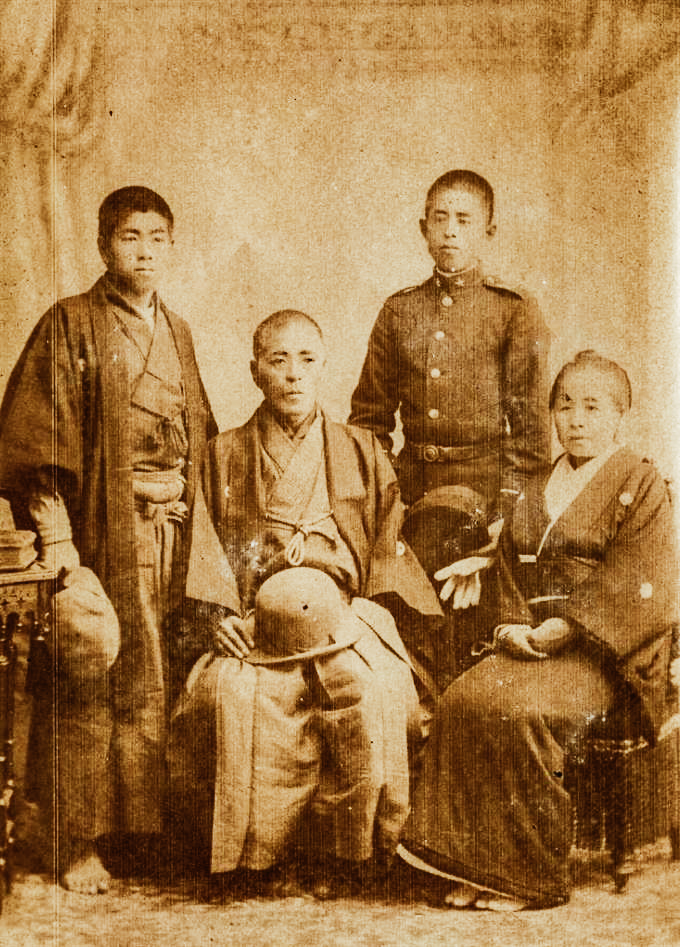
photo credits: wikipedia.org
Fujita fought on the Meiji government's side during Saigō Takamori's Satsuma rebellion, as a member of the police forces sent to support the Imperial Japanese Army.
During his lifetime, Fujita Gorō shared some of his Shinsengumi experiences with a select few, but he didn’t write anything about his activity in the Shinsengumi as Nagakura Shinpachi did. During his life in the Meiji period, Fujita was the only one who was authorized by the government to carry a katana despite the collapse of the Tokugawa rule. In 1875, Fujita assisted Nagakura Shinpachi (as Sugimura Yoshie) and Matsumoto Ryōjun in setting up a memorial monument known as Grave of Shinsengumi in honor of Kondō Isami, Hijikata Toshizō, and other deceased Shinsengumi members at Itabashi, Tokyo.
Following his retirement from Tokyo Metropolitan Police Department in 1890, Fujita worked as a guard for Tokyo National Museum, and later as a clerk and accountant for Tokyo Women's Normal School from 1899.
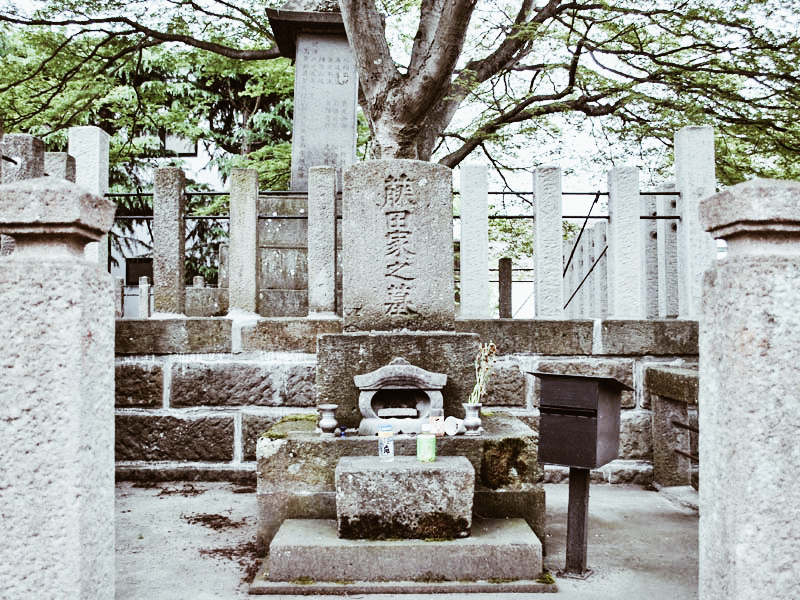
photo credits: wikipedia.org
Fujita's heavy drinking was believed to have contributed to his death from a stomach ulcer. He died in 1915 at age 72, sitting in seiza in his living room. Upon his will, he was buried at Amidaji, Aizuwakamatsu, Fukushima, Japan.
Japan History: Yamaoka Tesshu
Ono Tetsutaro, better known as Yamaoka Tesshu, was born in Tokyo on June 10, 1836. His father was Ono Asaemon, of the Tokugawa court, and her mother Iso was the daughter of a monk of the Kashima temple. At the age of 9 he began the practice of Jikishinkage ryu and a few years later the Hono ha Itto ryu, while at the age of 17 he started the study of the spear with the master Yamaoka Seizan, who died prematurely two years later. Tetsutaro was adopted into the master's family, and married his sister, taking the name Yamaoka Tesshu.
Yamaoka Tesshu and his history
Author: SaiKaiAngel
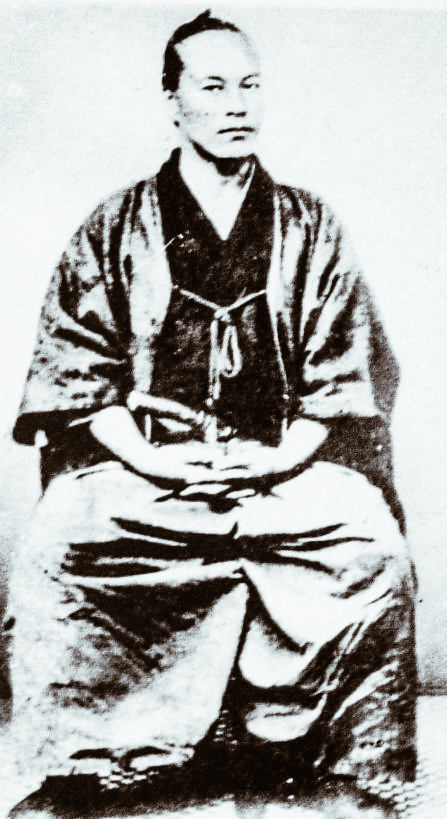
photo credits: musubi.it
Although he had a not negligible physicality, considering his 185 cm height and his weight of 110 kg, he was able to assert himself only with his incredible personality and sensitivity. However many times he was not able to stop himself, even to the point of denying the existence of Buddha, sentient beings and realization. Nothing to give and nothing to receive.
At that point, Master Dokuon struck him with his pipe and said: "If nothing exists, then where does this anger come from?”
From the world of the sword, he received many teachings. In one of the meetings with master Sasakibara Kenkichi, he stood still for 40 minutes together with his opponent, facing each other in their respective guards until both rested their weapons. At the age of 28, Tesshu was unexpectedly defeated by the 40-year-old Asari Gimei, master of the Nakanishi Ha Itto-ryu school. From that moment on, he could no longer give peace to the idea of defeat against an older man, of whom he had become a disciple but failed to understand his teaching. Asari, without hitting him, forced him to step back out of the dojo by closing the door in his face.
Tesshu's introspective study lasted 16 years, without being able to understand what was wrong with his technique, his lifestyle, despite the training and Zen teachings. On March 30, 1880, Tesshu during a zazen session went to Asari and asked him for a new fight. Asari declined, justifying himself with these few words, "Now you have arrived". From that moment he left teaching and his school to Tesshu who succeeded in developing a method called Muto ryu (school without sword) different from the Itto ryu especially in teaching, still practised but by a very small group of people. He died on July 19, 1888, at fifty-three years of age due to stomach cancer. Before dying, he wrote his Jisei no ku (poem of death), closed his eyes and, even in death, did not abandon his style assuming the formal posture of zazen, as can be seen from the drawing of his disciple Tanaka Seiji.
During Tesshu's funeral at the Zensho-an temple the monk Tekisui composed these verses:
Sword and brush balanced between Absolute and Relative
His loyal courage and noble strength pierced Paradise.
A dream of fifty-three years,
Wrapped by the pure fragrance of the flourishing lotus in the middle of the roaring fire.
Again, Katsu Kaishu, a great swordmaster, wrote the following words next to a portrait of Tesshu:
Valiant and wise, this virile man accomplishes great things
His sword was incomparably sublime
Its illumination embraced everything
Will future generations ever see the same?
Explanation of Mute Ryu
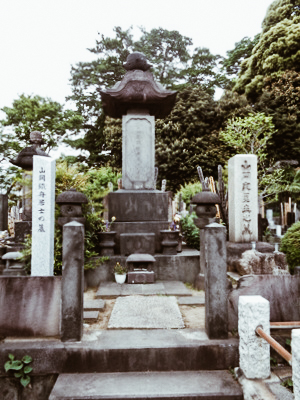
photo credits: wikipedia.org
The goal of Muto Ryu is "no enemy". Everything depends on the mind. If we imagine a very skilful opponent, our sword stays still, if we imagine a weak opponent, the mind opens and the sword is free. This is proof that nothing exists except the mind. Taken by agitation, a warrior would move the sword without thinking and confusedly without hitting the opponent. From this idea was born the school of non-sword (Muto ryu). Out of mind there is no sword, this means: not sword corresponds to not mind; not mind means a mind that is stable everywhere. If the mind stops, the opponent appears; if the mind keeps moving there is no enemy. Continuous and intense training leads to the stage of no enemy.
Tesshu's method required intensive and incessant training focused mainly on basic principles. The first 3 years were dedicated to the study of the 5 basic kata of Muto ryu and it was forbidden to follow in that period the teachings of other schools. Three levels of seigan were foreseen for advanced students, who were admitted only after having passed a trial period consisting of 1000 consecutive days of training. In order to pass the first seigan level, 200 sword fights had to be fought in a single day; the second level provided for 3 days with 600 fights and the third, 7 days with 1400 fights.
The name of Yamaoka Tesshu's dojo, Shumpukan, comes from a poem by Chinese monk Bukko Kokushi:
In heaven and on earth there are no points to hide
Joy belongs to those who recognize that things
They are empty and man is also nothing.
Splendid indeed the long Mongolian swords
Blasting the spring wind like a flash of light
The shumpu, the spring wind, gave the name to the dojo.
The writings of Yamaoka Tesshu
Below we have some writings by Tesshu that better describe his strong personality:
Return to the Beginner's Mind, August 1882
If the wonders of swordplay elude you, it returns to the beginner's mind. The beginner's mind is not just any kind of mentality: striking as the only intention without thinking about the movement of the body and moving forward with force is proof that you have forgotten yourself. Technicians are hindered by analytical thoughts. When the obstacle of a discursive approach is overcome, the wonders of the art of the sword can be appreciated. In the beginning, it is necessary to practice with well-tempered swordsmen in order to discern one's own inadequacies. Pursue your study to the end, awaken your irresistible strength, practice tirelessly until your heart is immovable, and then you will understand. Practice until no doubt remains. Surely the time will come to discover the wonders.
From Itto shoden Muto Ryu Kanaji Mokuroku: Suigetsu (the moon in the water), April 10, 1884.
Even when the water from a puddle is moved in the ladle, the moon is reflected in it. The moon's reflection is not lost when the water moves from ladle to ladle. When you are disturbed, then there is no reconnaissance; the moon does not appear in the agitated water. If your mind is calm and the ladle is still, the moon's reflection is maintained.
Do not concentrate
When hitting your opponent
Move naturally
Like moonbeams penetrating
In a homeless hut
You may be unhappy with a roofless hut, but the same moon that illuminates the skies naturally fills it with its light. So, you can attack your opponent and win. Regardless of keeping your little self, charge towards your opponent. If you are confused or nervous you will surely lose.
Other Famous Phrases
As a samurai, I must strengthen my character; as a human being I must perfect my spirit
Thirst for victory leads to defeat; not tiring of defeat leads to victory.
If you want to obtain the secrets of such wonderful techniques, drill yourself, harden yourself, undergo severe training, abandoned body and mind; follow this course for years and you will naturally reach the most profound levels. To know if the water is hot or cold you must taste it yourself.
Zen is like soap. First, you wash with it, and then you wash off the soap.
Do not think that this is all there is. More and more wonderful teachings exist.
The world is wide, full of happenings. Keep this in mind and never believe 'I'm the only one who knows.'
The moon does not think to be reflected, nor does the water think to reflect, in the Hirosawa Pond.
Unfortunately, many of his writings are apocryphal, but that does not make them less profound and important for life than anyone who has read them. We think that they can be a help even nowadays in many situations.
Political and Social Life

photo credits: wiki.samurai-archives.com
Tesshu also had an active political and social life as a negotiator. He was first in the service of the shogun, so at the end of the war Boshin in 1869 treated the surrender in front of the siege of the imperial forces commanded by Saigo Takamori.
His success was the fact that he focused on establishing contact with the enemy forces, with linear but provocative conduct: he intimidated the enemy of the emperor to let him pass without fear.
If we think of Tesshu's impetuous character, never willing to give in to compromises, it is really strange to see him as a great negotiator. In his short and adventurous life he was also the emperor's bodyguard, with his readiness of reflexes and decisions.
Genji's Tale
Murasaki Shikibu is the name behind the Japanese woman who wrote what is called the world's first novel, The Genji monogatari (源氏物語 lett. "The Genji Tale").
Genji's Tale, The World's First Novel
Author: SaiKaiAngel | Source: Tokyo Weekender
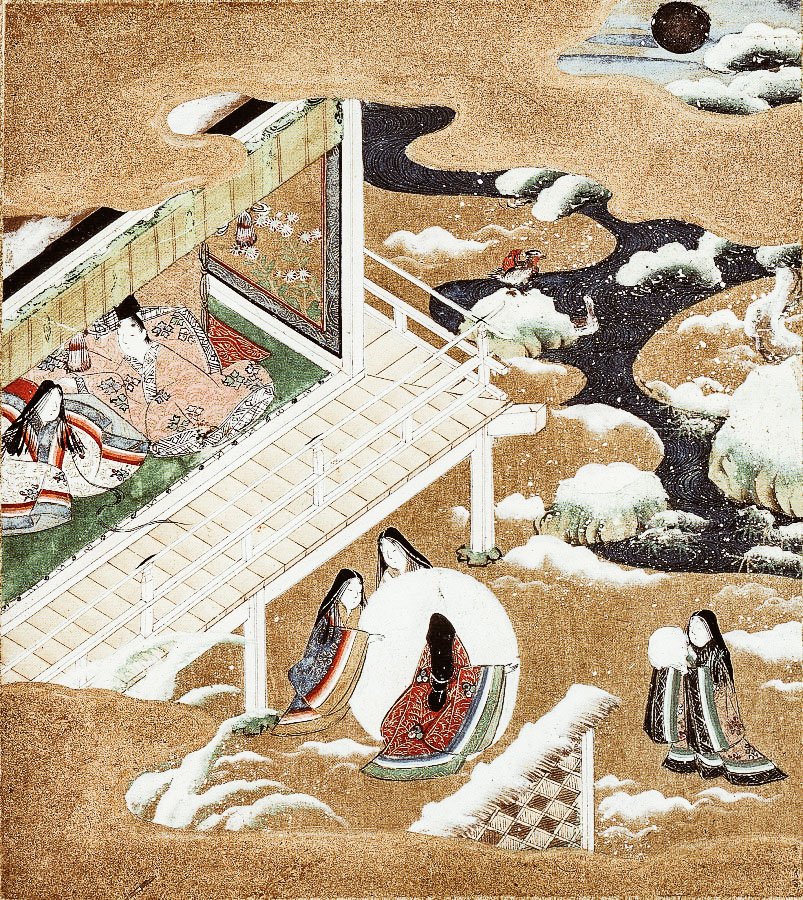
photo credits: tokyoweekender.com
Every work of contemporary art is the result of centuries of cultural history. In the case of Japanese literature, we are talking about 1,000 years of written prose and poetry. It all began in the Heian period (794-1185) with Murasaki Shikibu, a companion and member of a minor branch of the powerful Fujiwara clan. Murasaki was the author of one of the most important literary works in the world, The Tale of Genji, published in the early 11th century. By way of comparison, it is thought that the first novel in modern European history is Cervantes' Don Quixote, first published in 1605.
Heian aristocracy
While Shikibu was undoubtedly a pioneer of fiction in Japan, not much is known about her, not even her first name. At that time, the maiden names of elite women were not registered. The name Murasaki Shikibu would have been created based on one of the characters in The Tale of Genji and on his father's status (Shikibu, which means "Ministry of Ceremonies" in Japanese), although historians still dispute this theory.
Like many women of her status, she lived relatively comfortably, although the aristocratic lifestyle had some restrictions. The elite of the Heian period favoured high education and culture, and often the most powerful individuals were also the most educated.
Men learned everything from poetry and languages to law and politics. Women, on the other hand, were limited to the arts because this was what was considered attractive at the time. Chinese was an important language to know for those directly involved with the court and to participate in literary circles, but women usually could not study it.
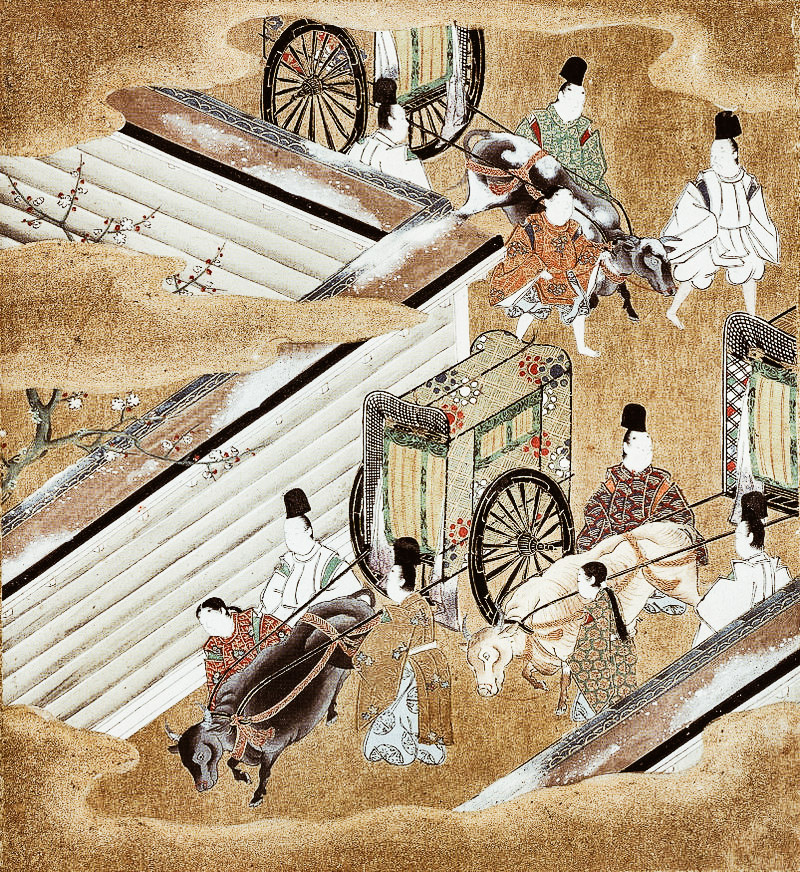
photo credits: wikipedia.org
This has not prevented aristocratic women from investing in the creative field, using hiragana and contributing significantly to the genre of the poetic diary. Lady Murasaki's Diary together with Sei Shonagon's The Pillow Book are the main representatives of the genre to date.
Through fragments of Shikibu's diary and narrative work, historians have been able to learn about the unique aristocracy of classical Japan. At the time, poetry and prose were written based on the lives of their authors, but Shikibu's was distinct from the masses in that it was clearly a work of fiction - although many claim that the stories in The Tale of Genji were inspired by real events.
Genji's Tale
Genji's Tale is thought to be the world's first written work of fiction. It’s not certain whether Shikibu wrote the complex story in a couple of years or decades, but what is certain is that this complete literary work is a portrait of the Heian aristocracy in all its complicated hierarchies.
What is even more impressive is that, despite the long list of characters and appearances throughout the book, the story still surrounds only what at the time was less than 1% of the population, the highest elite.
Reading the chapters gives you a vivid idea of what it was like to be a man or a woman in the Heian period, with the corresponding expectations. The protagonist, Genji, is the archetype of a hero of the period, the perfect man. Son of an ancient emperor, his right to the throne was taken away from him and he was demoted to populan when he changed his name to Morimoto.
The Story of Genji Monogatari
The work tells of one of the sons of the Japanese emperor of the Heian era, known by the name of Genji or rather Hikaru Genji (Genji Splendente). Genji, however, is just a different way to read the kanji of the Minamoto clan (the reading On of Minamoto is in fact 源 Gen, the same kanji present in the word Genji), a family that really existed and to which the author wanted to allude. Born from the emperor's relationship with one of his concubines, and therefore unable to be part of the main branch of the imperial family or aspire to the throne, Genji is adopted by the court which allows him to climb the high ranks starting from the position of simple court official.
The whole story then revolves around Genji's love life and his various relationships, thus showing the customs of the court society of the time. Despite his numerous relationships and the different wives he will have during his life, as a libertine Genji still shows his particular loyalty and bond with all the women in his life by not abandoning any of his wives or concubines, especially at a time when for a concubine or wife to be left by her protector meant abandonment of society and marginalization.
Among them, however, one woman was a particular presence in the life of the young Genji: Fujitsubo. The premature death of his mother left in Genji a void that the young man tried to fill throughout his life, always looking for a mother figure in all the women with whom the young man fell in love. He thought he would find the mother figure in Fujitsubo, a concubine of the Emperor, his father.
In the woman, Genji saw not only the sweetness of the mother but also beauty and gentleness, and although he was reciprocated by the woman, the two were forced to repress their feelings because she "belonged", as concubine and then bride, to the Emperor, and Genji had recently joined the Emperor in marriage with Princess Aoi.
The story continued telling the intertwined stories of all the characters whose lives were intertwined and united until the end of the novel, with the conclusion that saw Genji in old age, reflecting in solitude on the meaning of life and the transience of things and their fleeting beauty. However, there are other chapters, known as Uji's Chapters, which, like the rest of the work, continue to recount events even after Genji's death and have as their protagonists Genji's son and a friend struggling with their love affairs.
However, the story ends abruptly, almost in the middle, leaving the various foreign scholars and authors who have translated the English version to imagine that the work has not been completed by the author. In fact, it seems that Murasaki didn't plan any end for the novel but simply continued to write it as long as he wanted or could leave it incomplete.
Structure of the Genji Monogatari
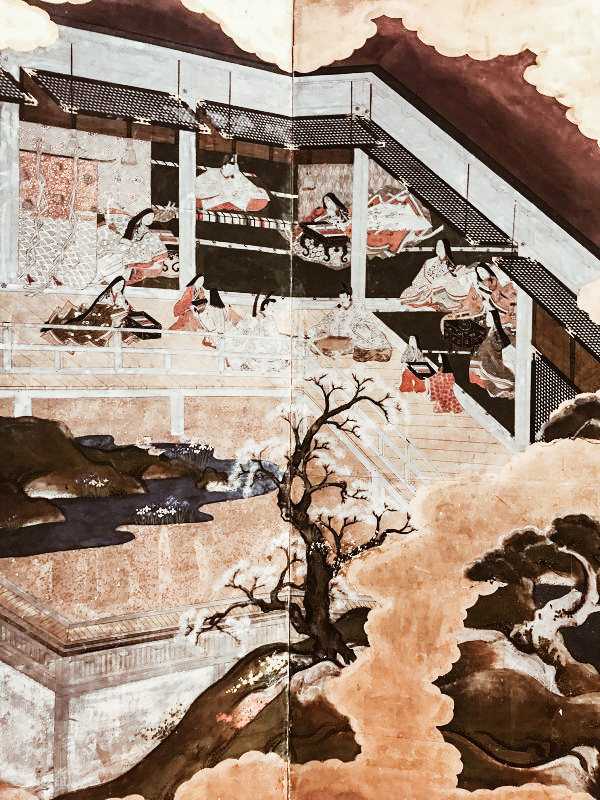
photo credits: rugrabbit.com
The story that tells the life of Prince Genji, tells about the young prince's youth, his rise to success, his worldliness and loves until his fall and then rise again. A plot in which there are bewitching and beautiful female figures as a frame. As for the language, it is very complex and not easy for modern readers: being from the Heian period and moreover in a court environment, Murasaki's language has a very complex grammar.
Each character is almost never called by name but by their honorary title or according to their class. For women, instead, typical colour of their clothing is indicated, different for each female character, or alludes to a woman using the rank of a male relative of the first order to which she belongs.
Another difficulty of the novel is the presence of poetry and conversations written in verse. This often served the characters to communicate subtle and veiled allusions in a court environment: poetry is classic Tanka poetry. Like most writings of the Heian period, the Genji was most likely written all, or almost all, in kana, and not using Chinese characters as it is written by a woman for a female audience.
It is well known that in the Heian era writing in Chinese characters was something purely masculine, but women were forbidden.
Besides many suggestions of a society dominated by men, the novel was proof of something that could be even more crucial: women had undeniably played a great role in the propagation of the arts. In fact, while the Heian period saw many failed attempts to revolutionize Japanese government policies, what's left is a rich attachment to the culture that Japanese society still clings to today.
The prose and poems written in hiragana by the women of the court ensured that the lower classes could also enjoy them. In other words, the Heian period is seen as a time when the art world in Japan was born. Not only Shibiku is an important historical figure for its legacy in Eastern and international literature, but she is a symbol of an era in Japan when women were successful in ways never seen before.
Murasaki Shikibu in popular culture
Shikibu is one of the most significant historical figures in East Asian cultural history and, over the next millennia, has remained a staple in Japanese high schools and colleges, just like Shakespeare in Europe and North America.
There have been many important translations and interpretations, as well as a fair amount of criticism. In Japan, Genji's tale is commemorated on the rare 2,000 yen note and Murasaki Shikibu is the name of the Japanese berry plant.
Like the story of the 47 ronin, Genji's Tale has been adapted for the big screen several times, and the latest is the feature film Genji monogatari: Sennen no nazo (2011). In recent years, Murasaki Shikibu herself has appeared in mobile games such as Fate/Grand Order and Monster Strike, where the characters are inspired by her work.
Japan History: Eugène Collache
Eugène Collache (29 January 1847 Perpignan - 25 October 1883 Paris) was an officer in the French Navy of the 19th century. He left the Minerva ship in the port of Yokohama with Henri Nicol to rally other French officers, led by Jules Brunet, who had embraced the Bakufu cause in the Boshin war. On November 29, 1868, Eugène Collache and Nicol left Yokohama aboard a commercial ship, the Sophie-Hélène, chartered by a Swiss businessman.
Eugène Collache, between France and Japan
Author: SaiKaiAngel

photo credits: wikipedia.org
Eugène Collache and Boshin's war in Japan
Eugène Collache and Henri Nicol first reached Samenoura bay in Nanbu province (modern Miyagi prefecture), when imperial forces had subdued the daimyō of Northern Japan and that those in favour of the shōgun had fled to the island of Hokkaidō. In Aomori, they were warmly welcomed by Tsugaru's daimyō. An American ship warned them of an arrest warrant against them and Eugène Collache, always with his friend Henri Nicol, decided to board that American ship to reach Hokkaidō.
During the winter of 1868-1869, Eugène Collache was commissioned to establish fortifications in the volcanic mountain range to protect Hakodate.
The surprise attack on the Imperial Navy, in which Collache participated in the battle of Miyako, occurred on May 18. Collache was on the ship Takao, while the other two ships were the Kaiten and the Banryū. The ships encountered bad weather, so the Takao reported engine problems and the Banryu returned to Hokkaido, without joining the battle.
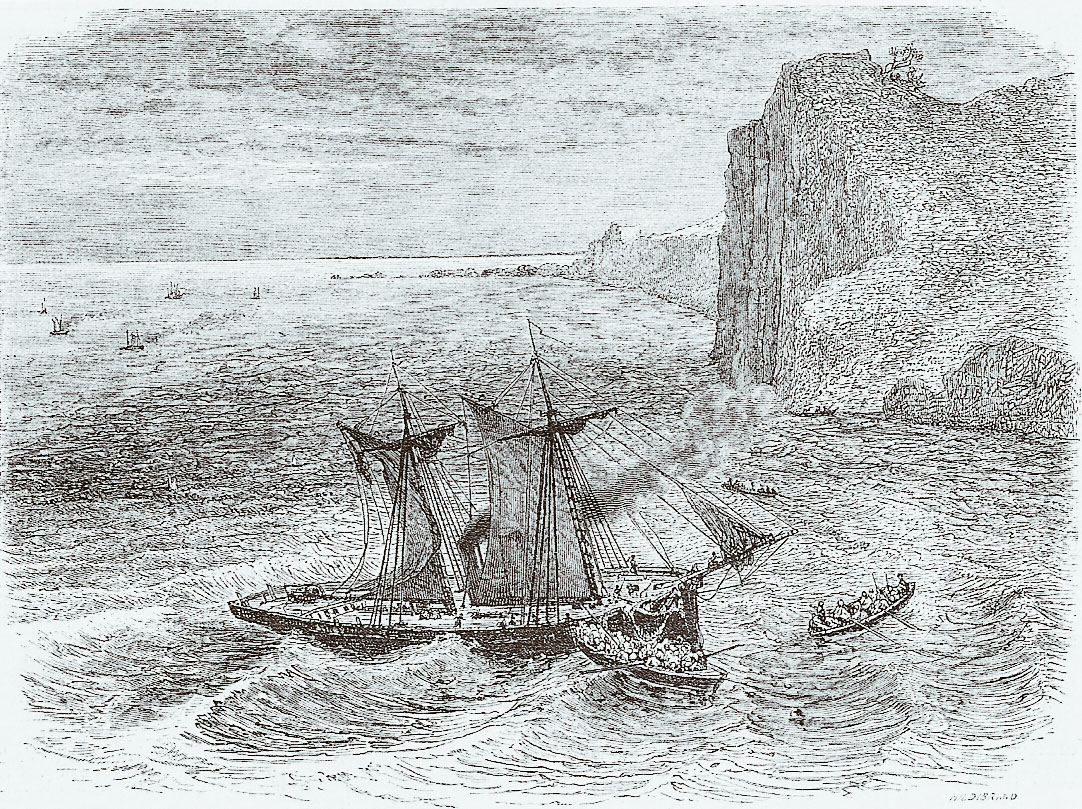
photo credits: wikipedia.org
Kaiten instead planned to enter the port of Miyako with an American flag. Due to engine problems, Takao was sailing after him and at that moment Kaiten joined the battle for the first time by raising the Bakufu flag a few seconds before boarding the imperial warship Kōtetsu. The Kōtetsu managed to repel the attack with a Gatling gun and the Kaiten came out of Miyako bay just as Takao entered it. Eventually, Kaiten fled to Hokkaidō, but Takao was unable to leave the pursuers and was destroyed
At that point, Collache tried to escape with the favor of the mountain, but surrendered after a few days together with his troops to the Japanese authorities. They were taken to Edo for arrest. Collache was judged and sentenced to death, but eventually pardoned and transferred to Yokohama aboard the French Navy frigate Coëtlogon, where he joined the French rebel officers led by Jules Brunet.
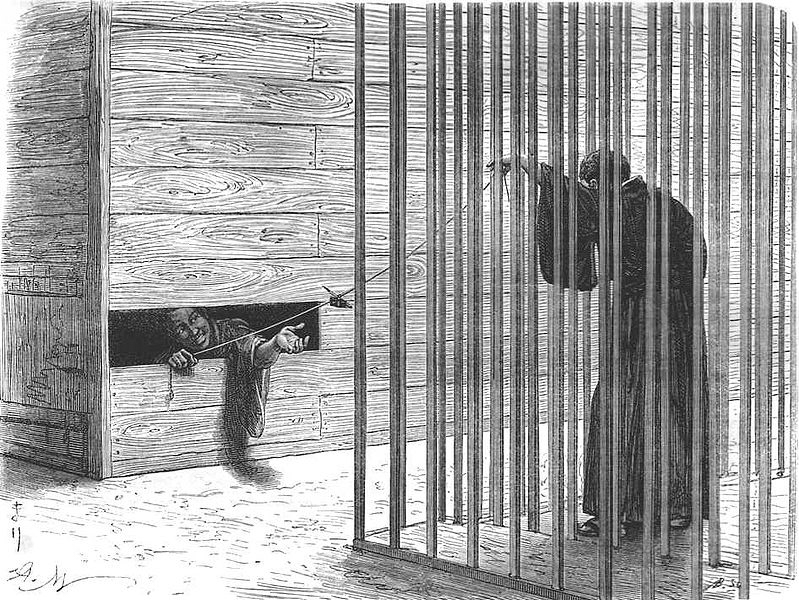
photo credits: wikipedia.org
Return to France
Returning to France, he was discharged from the military and called a deserter, but the sentence was light and he was allowed to return to the list for the Franco-Prussian war together with his friend Nicol.
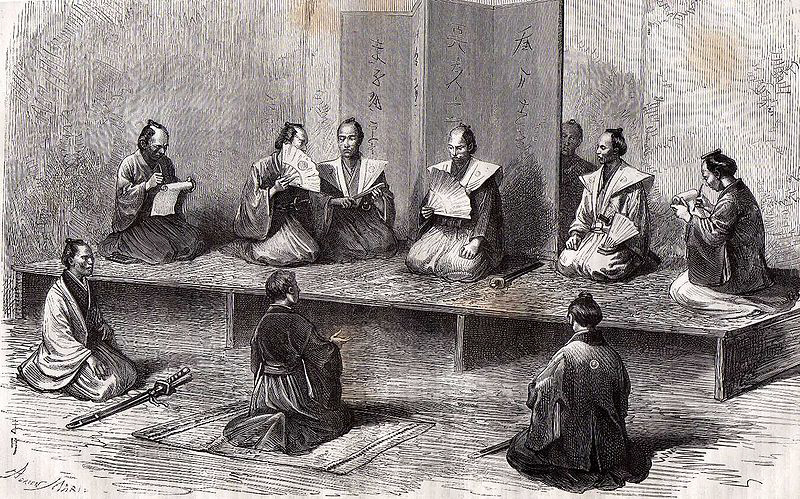
photo credits: wikipedia.org
Books
The experience in Japan was very important, so Eugène Collache wrote "An Adventure in Japan 1868-1869" ("Une aventure au Japon 1868-1869"), which was published in 1874.
The shōchū and its infinite pairings
If you follow us closely, you've surely heard about shōchū several times. I’m about to make a small recap just to remind you what we are talking about: shōchū is a distillate made from barley, sweet potatoes or rice. Generally, it contains 25% alcohol so it is lighter than vodka but stronger than wine. The production area of this distillate is the island of Kyūshū, but today it’s produced practically everywhere in Japan.
The shōchū and its infinite pairings
Author: SaiKaiAngel
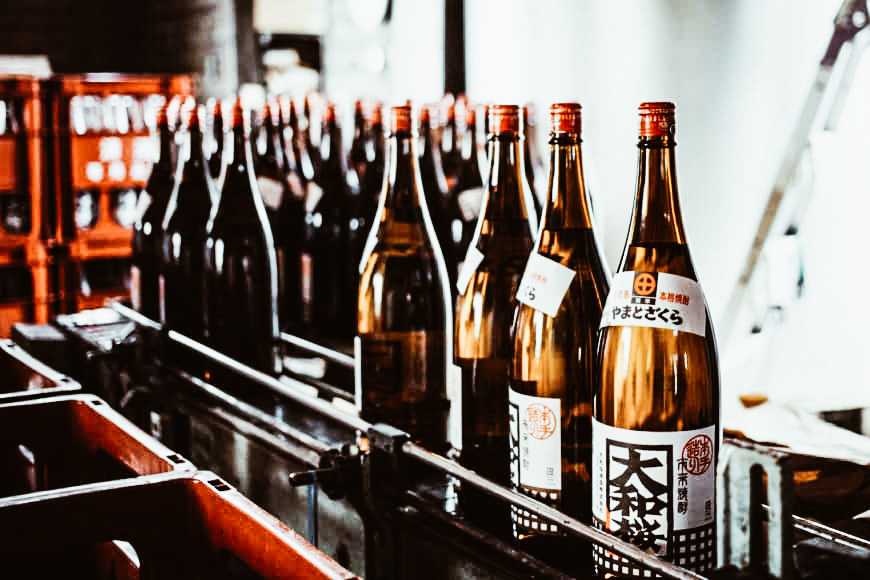
photo credits: japantimes.co.jp
The pandemic caused by COVID-19 has caused or even just resurrected many fears in the minds of many, from the fear of dying to the much lighter fear of gaining weight.
We are all, even more, looking for everything that can be healthy... well, it seems that shōchū may be just one of the things we should be looking for. Shōchū expert Stephen Lyman, the author of the book "The Complete Guide to Japanese Drinks" also nominated for a James Beard Award, has replaced beer and wine with shōchū and thanks to this he has lost seven kilos in seven months! Obviously, if we give importance to weight loss, it is absolutely not for an aesthetic issue, but to avoid serious diseases such as obesity.
The shōchū in 2003 has reached a sales volume even higher than the sales of sake! Its popularity is growing, driven also by its alleged medical benefits - ranging from the prevention of blood clots to the containment of obesity - which make it a healthy alternative to other alcoholic beverages.
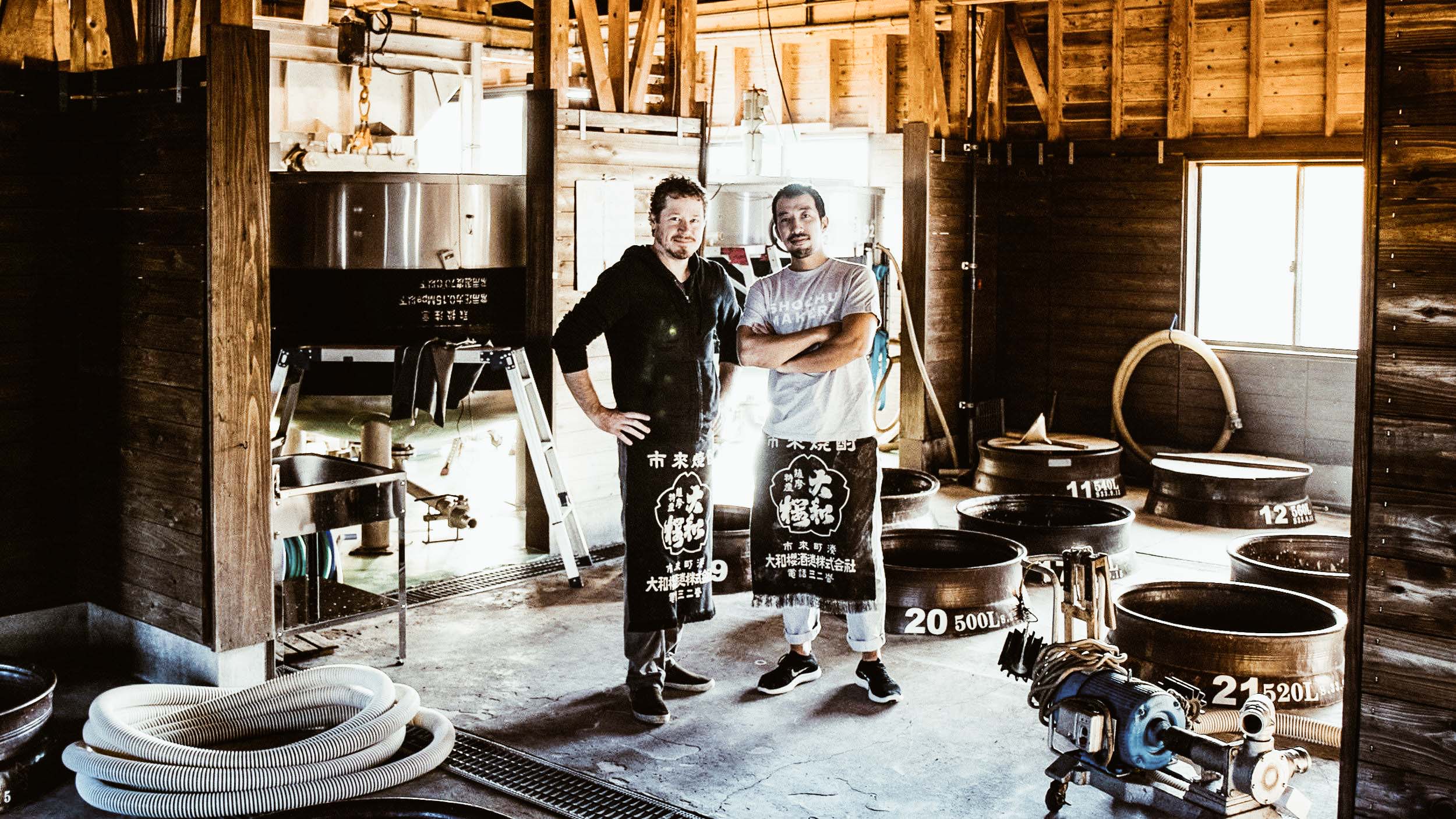
photo credits: japantimes.co.jp
Lyman, a native of New York, discovered this beverage in an izakaya bar in Manhattan more than 12 years ago and it was love at first sight. Lyman explains: "I've always loved wine and craft beer. Distilled drinks were a bit too strong for me and I was always looking for a drink that would have been perfect with food".
Shōchū is good for diet too
In 2011 Lyman's interest in shōchū became a real passion, and he started drinking it, even more, when a sports injury caused him a gain of weight. "I knew that shōchū was low-calorie, so I decided to give up wine and beer for shōchū six days per week," he says. Within a month, Lyman lost two kilos; after two months, five. Because of this, having found the shōchū could make him lose weight without altering his lifestyle, he began to take an interest in this Japanese drink and all possible pairings. Lyman says that the pairing of shōchū is possible with more than 50 possible ingredients! Richer shōchū notes work with heavier foods and, in particular, with miso dishes.
The barley shōchū obtained by vacuum distillation with a lighter and more aromatic style is perfect with white fish dishes, delicately flavoured sashimi and simmered. In general, the sweet-potato shōchū instead goes well with meat such as pork, while the kokutō (black sugar) shōchū, which is similar to rum, harmonizes with grilled meat. The full taste of shōchū is a surprising accompaniment to dark chocolate.
Also, the Iichiko Silhouette also called "the Johnnie Walker of shōchū" tastes like stone fruit and paired with soda water can be served with watermelon and mint soup. The shōchū Yamatozakura resists the sweet and earthy spices of Taiwanese braised pork with aniseed and cinnamon, while the Komaki Issho Bronze, a shōchū of sweet potatoes easy to eat, goes perfectly with a vegan stew of sweet potatoes, chickpeas and peanuts.
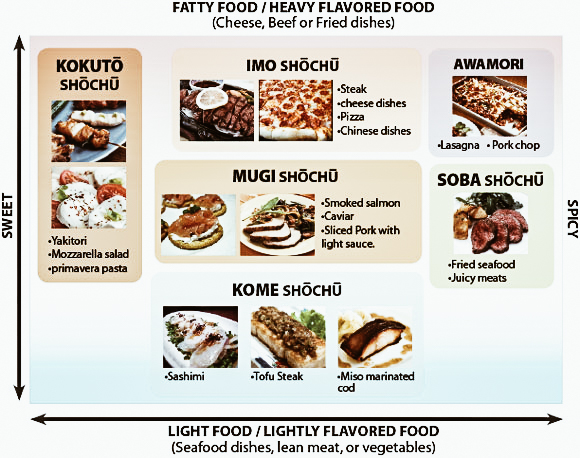
photo credits: mtcsake.com
But let's go more specifically and analyze some of the tastiest combinations:
Imo, sweet potato shōchū
Pork chops, pizza Margherita, fried tempura
Imo has a sweet aroma and taste, which goes well with substantial dishes or fried foods. It also is good with rich Chinese food or pizza with lots of cheese.
Mugi, derived from barley
Smoked salmon, caviar, sliced pork with lemon sauce
The mugi has a very clean and fresh taste. Technically this drink goes well with any kind of food, but it tastes better with a simple dish than with an oily dish. The aroma of barley enhances the vegetable sauce.
Kome, from rice
Sashimi, trout marinated in miso, tofu steak.
The kome has an umami (flavor) that goes well with any kind of food but particularly indicated with the delicacy of sashimi. It can also be enjoyed with rice dishes.
Kokuto, sugar cane shōchū
Yakitori (grilled chicken), pasta primavera, mozzarella salad
The Kokuto is made with sugar cane and can taste a bit fruity. The fragrance of kokuto is similar to the one of sweet syrup, but the taste is very simple and delicate and not extremely sweet. This particular taste can bring out the original flavours of the food and is indicated with soy sauce dishes that have a slight sweetness.
Awamori shōchū
Porkchop, lasagna, banana pancake
Awamori has a special aroma and rich flavour that goes well with spicy or heavy foods such as cheese and creamy dish.
Soba shōchū
Penne arrabbiata, fried oysters, meatballs
The characteristics of soba are very mild and clear-cut but at the same time a little bit bitter. This can be enjoyed with slightly spicy foods or juicy meats.
I'm sure that as soon as you've finished reading this article you're already looking for the perfect shōchū for you, are you ready for a completely new adventure and completely different lunches and dinners?
Japan History: Yukio Mishima
Yukio Mishima pseudonym of Kimitake Hiraoka (Tokyo, January 14, 1925 - Tokyo, November 25, 1970), was a Japanese writer, playwright, essayist and poet and this year marks the 50th anniversary of his death.
50 years since Yukio Mishima's death
Author: SaiKaiAngel
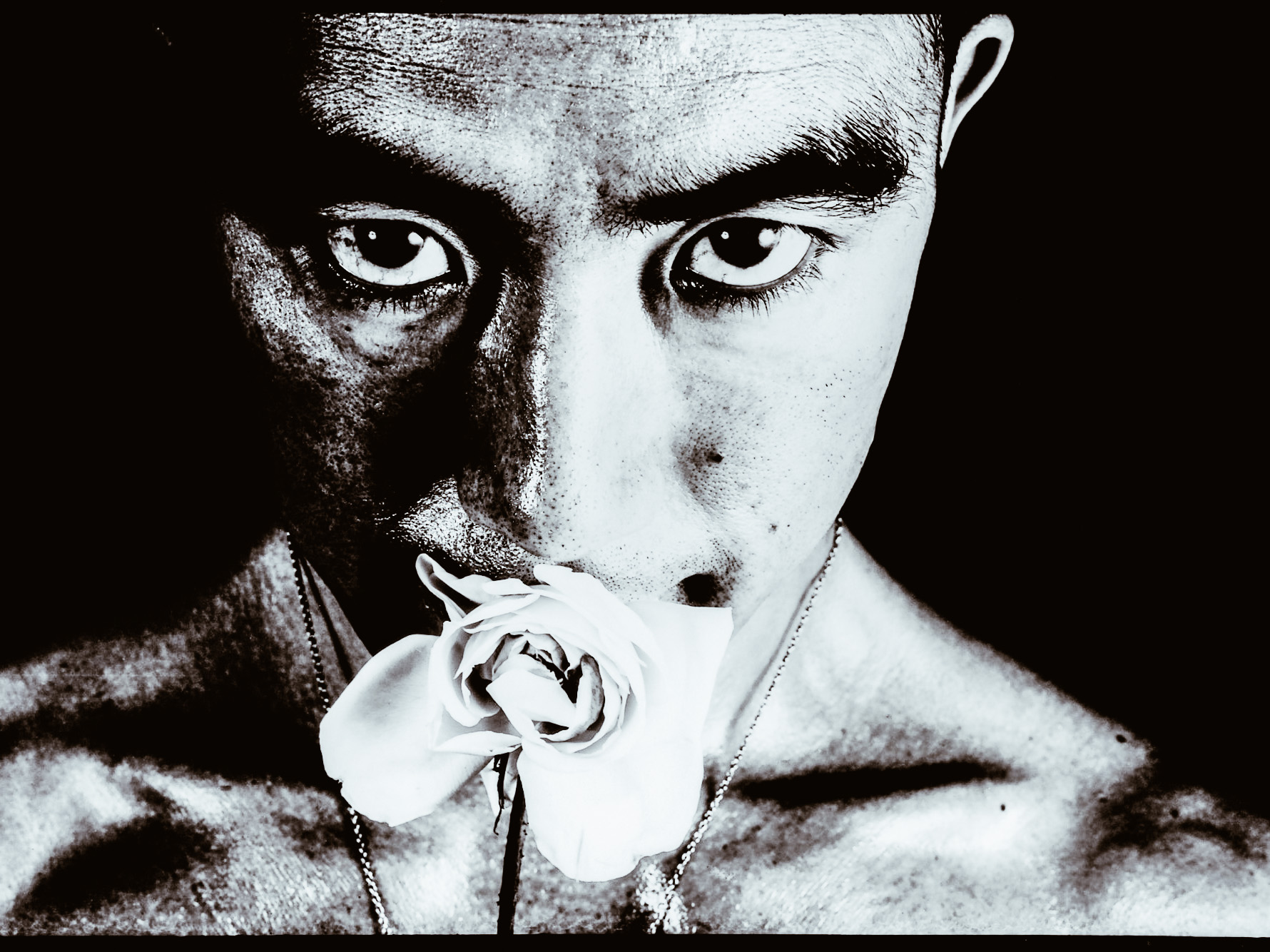
photo credits: @williert
Mishima was a highly controversial character, considered close to Fascism in Europe and, according to many critics, a nostalgic Japanese nationalist. Alberto Moravia called him a decadent conservative. The two met in Mishima's Art Nouveau western home in a suburb of Tokyo. Yukio Mishima, on the other hand, called himself apolitical and anti-political. Strongly patriotic, he also inspired numerous characters of his works, and the cult for the Emperor, seen as an abstract and/or semi-divine ideal, the embodiment of the essence of traditional Japan.
Kimitake Hiraoka was one of the few Japanese authors to have immediate success also abroad. His numerous works range from the real novel to the modernized and readapted forms of traditional Japanese theatre Kabuki and Nō. Yukio Mishima has revisited the Nō theatre in a modern key.
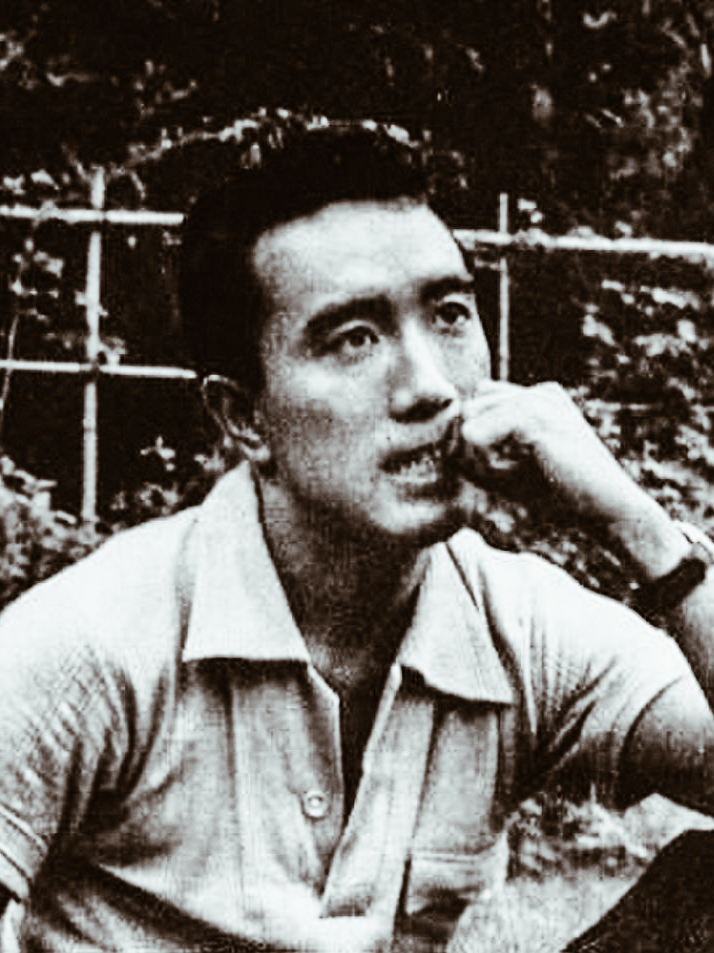
photo credits: thereaderwiki.com
The life of Yukio Mishima
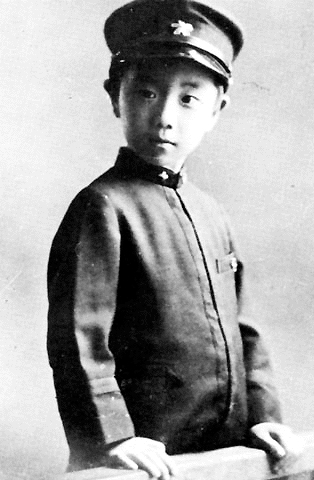
photo credits: wikipedia.org
Yukio Mishima was born in Tokyo on January 14, 1925, in the home of his paternal grandparents, Jotarō Hiraoka and his wife Natsuko. Her parents, Azusa and Shizue, lived together with her grandparents and her grandmother who had an unhappy marriage, assumes all responsibility for the education of the child, usurping the role of the mother. It will be his grandmother to bring the child closer to classical literature and the forms of the theatre Nō and Kabuki.
The relationship that little Kimitake Hiraoka had with her grandmother was something very obsessive, even his mother was allowed to visit him only for breastfeeding.
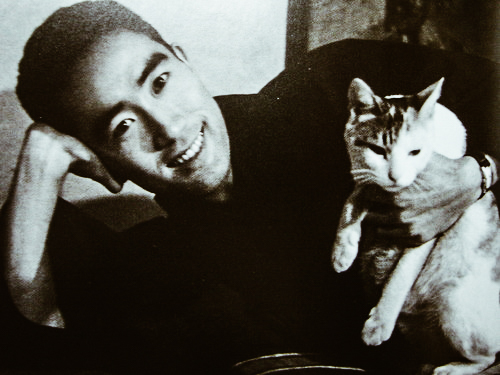
photo credits: paola1chi.blogspot.com
Grandmother never allowed her grandson to leave the house until Hiraoka escaped from her grandmother stolen from her mother in 1934.
These and other experiences of childhood and adolescence are reported in the novel Confessions of a mask of 1949, in-depth self-analysis of his life.
From 1931 he began studying Gakushūin, the school of the Peers, always thanks to the advice of his grandmother. In this school, most of the students were part of the aristocracy. Those who were not aristocrats were called "outsiders". With this school, students became more warriors than writers and Kimitake Hiraoka's poems were published in the school magazine.
His first work, Hanazakari no Mori (The forest in bloom) was completed in 1941 and was heavily influenced by the Japanese romantic school (Nihon romanha). The professor of Gakushūin letters, Shimizu Fumio, immediately noticed his classical style. Bungei Bunka magazine published the story and from there he began to use the pseudonym Yukio Mishima. Hanazakari no Mori will be published in book form together with other short stories: its success will make the name of the writer known to the public for the first time.
After school, convinced by his father, he enrolled in law university. After graduation, he won a competition as a state official at the Ministry of Finance. During the period of work at the Ministry, he lived a "double life": state official until the evening and writer at night, sleeping no more than three or four hours.
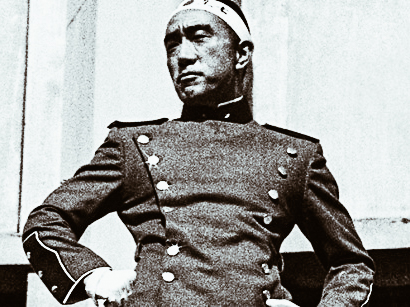
photo credits: oltrelalinea.news
Early works
In 1946 he presented two of his works to the Nobel Prize winner Yasunari Kawabata. Between the two there was a feeling of profound esteem more than that which actually binds teacher and disciple.
In 1948 he began his work at the Kindai Bungaku magazine, linked to leftist circles. Yukio Mishima always tried to avoid any political argument in his novels, apart from the descriptive character that we find in After the feast and the Horses on the run, in fact, Yukio Mishima became part of the leftist group only to get more contacts with the intellectual world.
After the publication of Kamen no Kokuhaku (Confessions of a mask) in June 1949, he received recognition from critics and sales. Between 1950 and 1951 he published three important novels: Thirst for love, The Green Age (1950) and Forbidden Colors (1951). In the novel Thirst for the love he returns to the third-person narrative.
In 1951 he visited the United States, Brazil and Europe as a correspondent for Asahi Shinbun. In Shiosai (The voice of the waves 1954) and the trip to Greece marked the beginning of a new life for Mishima: from 1955 he began to devote himself to bodybuilding, and to kendo.
Yukio Mishima: marriage and sexuality
Yukio Mishima got married on 11 June 1958 with Yoko Sugiyama, under the advice of the family; two children were born from the union, Noriko (2 June 1959) and Ichiro (2 May 1962).
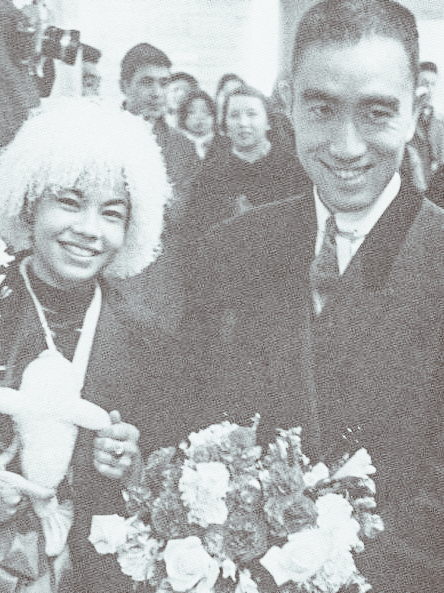
photo credits: paola1chi.blogspot.com
Yukio Mishima's sexual orientation was highly controversial, due to some of his visits to Japanese gay bars. Many testimonies saw him as the protagonist of homosexual relationships with for example the writer Jiro Fukushima. The latter wrote a novel describing very explicit details of the relationship with Mishima. At that point, Mishima's children started a fight for violating privacy.
At that time Yukio Mishima entered into a relationship with Eikoh Hosoe and became the model for some of his photos of Bara-kei, 1961–1962. Abroad, the title will be Killed by Roses or Ordeal by Roses.
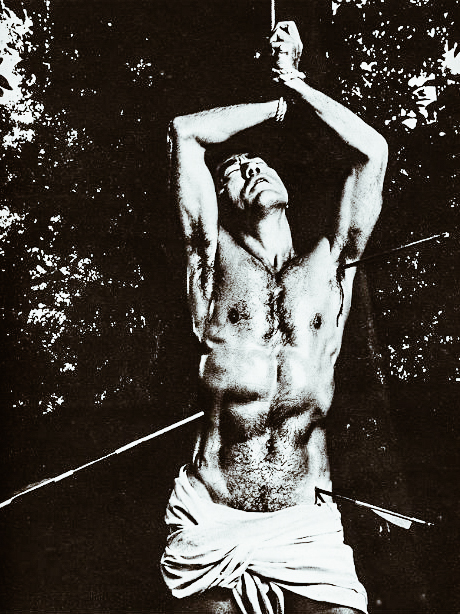
photo credits: dangerousminds.net
He began his acting career in the film based on Yūkoku (Patriotism, 1966), the story of a young officer who decides to do seppuku with his wife. The film was directed, written and played by him. In addition to this, his photos as a bodybuilder and kendōka are published in various newspapers, as well as news of the training periods together with the Jieitai (Japanese Self-Defense Force) and the foundation of the Tate no Kai (Shield Society), his "private army. "
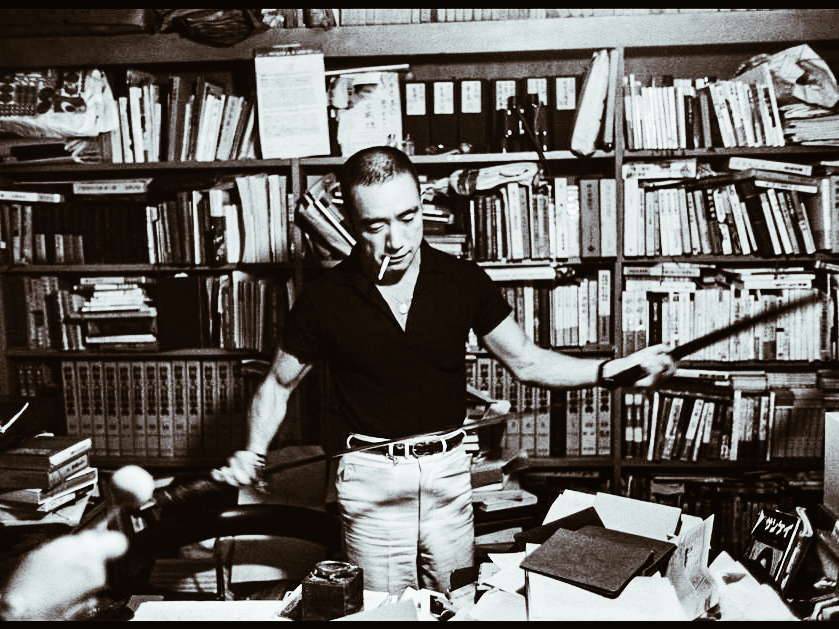
photo credits: lintellettualedissidente.it
The tetralogy Hōjō no Umi (The sea of fertility) began in 1965. The last volume is published in 1970.
Suicide
"A life that suffices to be face to face with death to be scarred and broken, perhaps it is nothing but a fragile glass." (from Spiritual lessons for young samurai and other writings)
Yukio Mishima had always been obsessed with the idea of death and decided to combine this unease with the ideas of traditionalist patriotism.
On November 25, 1970, at 45, Yukio Mishima gathered the most important members of the Tate no Kai ("Association of Shields"), which he himself had found, and occupied the office of General Mashita of the self-defence army. From the balcony of the office, in front of a thousand men of the infantry regiment, as well as newspapers and televisions, he gave his last speech: exaltation of the spirit of Japan, condemnation of the 1947 constitution and the San Francisco treaty, which they made the Japanese national feeling enslaved by westernization.
«We must die to restore Japan's true face! Is it good to have a life so dear to let the spirit die? What army is this that has no more noble values than life? Now we will testify to the existence of a higher value than attachment to life. This value is not freedom! It's not a democracy! It's Japan! It’s Japan, the country of history and traditions that we love. "It was November 25, 1970 in front of an audience of young soldiers, in which after this speech and after praising the Emperor, Yukio Mishima practised seppuku by piercing his belly and then having his head beheaded. Together with him, his most trusted friend and disciple, Masakatsu Morita, committed suicide too.
The choice of Seppuku
The date and manner of killing himself were not random, but chosen as the whole meaning of his life, the purpose for which it had been devoted. It all ended with the extreme act of the Japanese man: seppuku. This sacrifice was based on Wang Yangming's Chinese teaching that "knowing and not acting means not knowing".
Just before seppuku, he had delivered to the publisher the last part of the tetralogy The sea of fertility, which was however completed three months earlier, but with the date "November 25, 1970" just as a testament. He had organized his departure from the scene very coldly, he also left a note: "Human life is short, but I would like to live forever."
The three survivors went to justice and were sentenced to four years in prison for occupying the ministry, but were released for good conduct after a few months.
Summarizing it all, we can say that according to Yukio Mishima the relationships between human beings are reduced to a cloudy and confused mixture of good and evil, of trust and diffidence, distilled in small doses. Despite all this, if the group of people manages to make a pact based on a purity of mind, consumerism, relativism, nihilism and individualism become nothing. Yukio Mishima managed to transform his existence into something more important and profound, thanks to the way he had decided to live and die.

photo credits: wikimedia.org
His works
Romances
The forest in bloom (花 ざ か り の 森 - Hanazakari no mori, 1944)
The doll's house (雛 の 宿 - Hina no yado 1946-1963)
Confessions of a mask (仮 面 の 告白 - Kamen no kokuhaku, 1949)
Thirst for love (愛 の 渇 き - Ai no kawaki, 1950)
The Green Age (青 の 時代 - Ao no jidai, 1950)
Forbidden colours (禁 色 - Kinjiki, 1951)
Midsummer Death (真 夏 の 死 - Manatsu no shi, 1952)
The voice of the waves (潮 騒 - Shiosai, 1954)
A locked room (鍵 の か か る 部屋 - Kagi no kakaru heya, 1954)
Five modern Nō (近代 能 楽 集 - Kindai nōgaku shū, 1956)
The golden pavilion (金 閣 寺 - Kinkakuji, 1956)
A wavering virtue (美 徳 の よ ろ め き - Bitoku no yoromeki, 2007)
Kyōko's house (鏡子 の 家 - Kyōko no Ie, 1959)
After the banquet (宴 の あ と - Utage no ato, 1960)
Animal’s playthings (獣 の 戯 れ - Kemono no tawamure, 1961)
Wonderful star (美 し い 星 - Utsukushii Hoshi, 1962)
The taste of glory (午後 の 曳 航 - Gogo no eiko, 1963)
The school of meat - Nikutai No Gakko, 1963
The sword (1963)
Music (音 楽 - Ongaku, 1965)
Madame de Sade (サ ド 侯爵夫人 - Sado kōshaku fujin, 1965)
The voice of heroic spirits (英 霊 霊 聲 - Eirei no koe, 1966)
Evening dress (夜 会 服 - Yakaifuku), (1966-1967)
My friend Hitler (わ が 友 ヒ ッ ト ラ ー - Waga Tomo Hittorā, 1968)
The sea of fertility (豊 饒 の 海 - Hōjō no umi), 1968-1970, tetralogy composed of:
Spring snow (春 の 雪 - Haru no yuki, 1968)
Horses on the run (奔馬 - Honba, 1969)
The temple of dawn (暁 の 寺 - Akatsuki no tera, 1970)
The mirror of deception (天人 五 衰 - Tennin gosui, 1970)
Middle Ages & The Palace of the Roaring Deer (Mishima, history and secret affairs) (Chūsei, 1945–46 + Rokumeikan 1956)
Essays
1967 - Apollo's cup (ア ポ ロ の 杯 - Aporo no Sakazuki, 1967)
The way of the samurai (葉 隠 入門 - Hagakure nyūmon, 1967)
Sun and steel (太陽 と 鉄 - Taiyō to tetsu, 1970)
1988 - Spiritual lessons for young Samurai (若 き サ ム ラ イ の た め の 精神 講話 - Wakaki Samurai no tameno Seishin kowa, 1970): a collection of essays including the proclamation read by the author a few moments before the ritual suicide.
1997 - Letters 1945-1970 (川端康成 ・ 三島 由 紀 夫 往復 書簡 - Kawabata Yasunari ・ Mishima Yukio Ohfuku Shokan, 1997), SE (ISBN 88-7710-543-7): correspondence between Mishima and Yasunari Kawabata.
Nikken Cutlery makes you feel like real samurai
Nikken Cutlery not only decided to explain to you how Oda Nobunaga and the greatest Samurai cut the tags from their clothes, but they also created the way to make you do the same nowadays!
Nikken Cutlery makes you feel like real samurai
Autore: SaiKaiAngel | Fonte: Soranews24.com
In ancient times, the Samurai never left the house without their sword, because they didn't know when they should defend themselves. Nowadays, luckily it's less likely to meet enemies or brigands on the street (hopefully!), but still, the need of having to cut something or open a snack could happen. How nice would it be to be able to open a snack with this set of mini scissors in the shape of the real and historic katana? Enjoy the samurai spirit into everyday life!
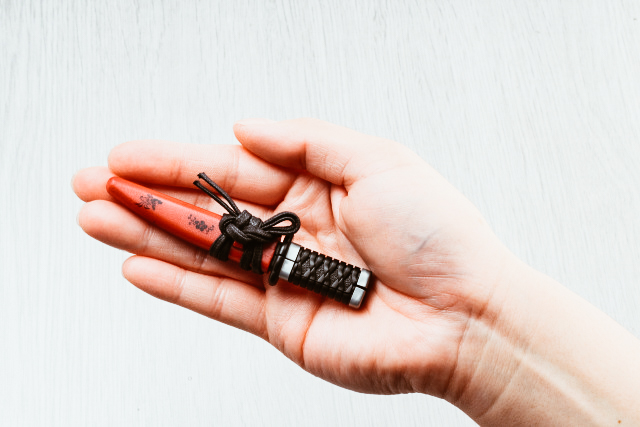

If you look carefully, you can also notice the famous hamon on the metal of these cutters in the shape of a katana, do you know what it is? The hamon (刃 文) is the line of tempering that characterizes the katana obtained through differentiated tempering.
A particular type of "differentiated" hardening between the back and the wire produces a slightly different colour line on the cutting edge, called hamon (刃 文). The shape of the hamon is an identifying sign of the age of the blade and of the author. In fact, the real katana connoisseur, looks at the hamon immediately. Obviously, Nikken Cutlery has also remained faithful to this for these special cutters.


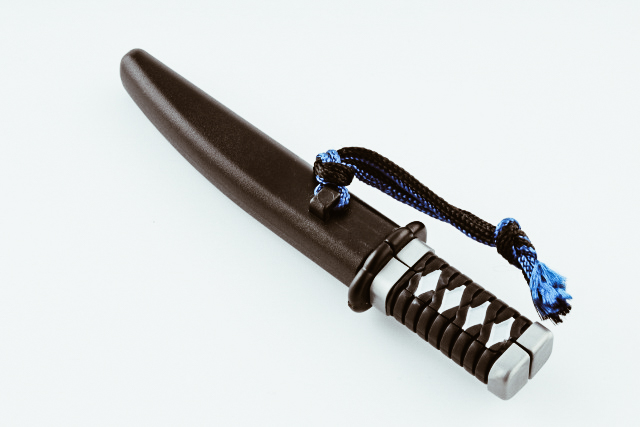
Nikken Cutlery, which is based in the city of Seki in the prefecture of Gifu, offers three models:
- First model: based on the Heshikiri Hasebe, the famous sword of the warlord Oda Nobunaga.
- Second model: Izumi no Kami Kanesada from Hijikata Toshizo, deputy commander of the 19th century Shinsengumi group.
- Third model: it comes from Shinsengumi, in the form of Yamato no Kamiyasusada, the sword of Okita Soji, a member of Shinsengumi.
And there’s more! The mini katana is equipped with a mini katanabukuro (the cloth container), with the blue and white Shinsengumi motif for the swords of Hijikata and Okita, or purple for the Nobunaga katanas.

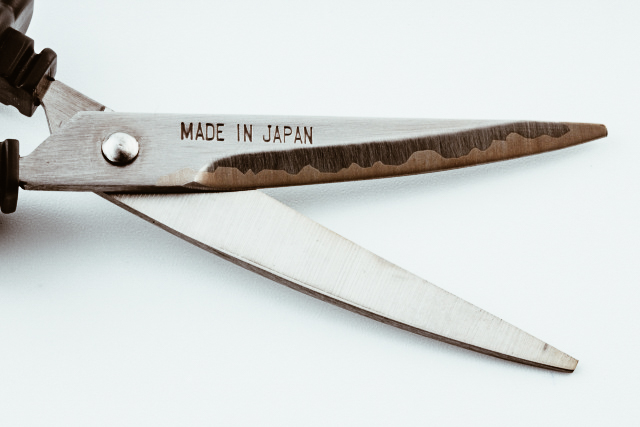
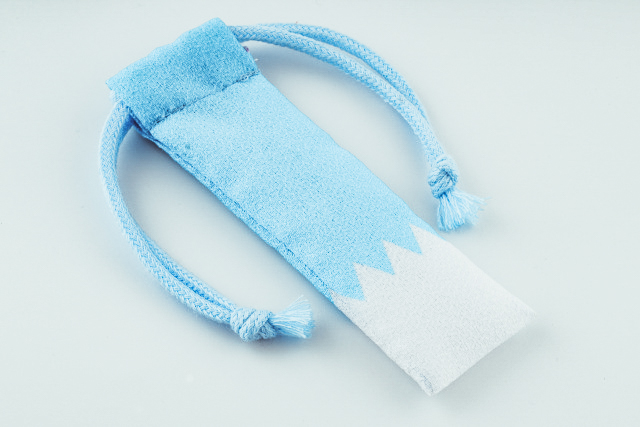
And again! Nikken Cutlery has decided to make you a Samurai also in the office. It’s true, their skills have also expanded in the creation of office tools and we are talking about surprising katana-shaped letter openers with the possibility of personalized engravings. So you want to open the letters like a real samurai? Not a problem thanks to Nikken Cutlery!

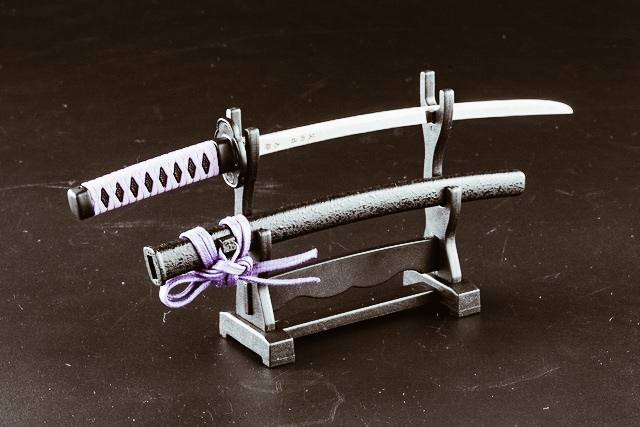
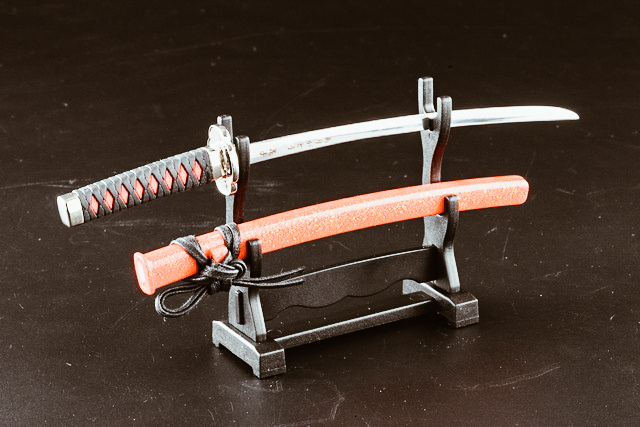
Also here you can choose among three varieties of katana letter openers. Each of them is equipped with support, so you can show your warrior spirit to everyone and with pride!
- First model: "Iron Cloud". Its handle is black and gold, and its sheath seems coated with lacquer since it is a glossy black with golden sparkles.
- Second model: "Scarlet Gold Cloud", with an elegant black and red hilt and a red sheath with splashes of gold.
- Third model: "Black Grains of Rock", which has a purple and black hilt and a black sheath with a rough texture that appears to have been roughly carved from lava rock.
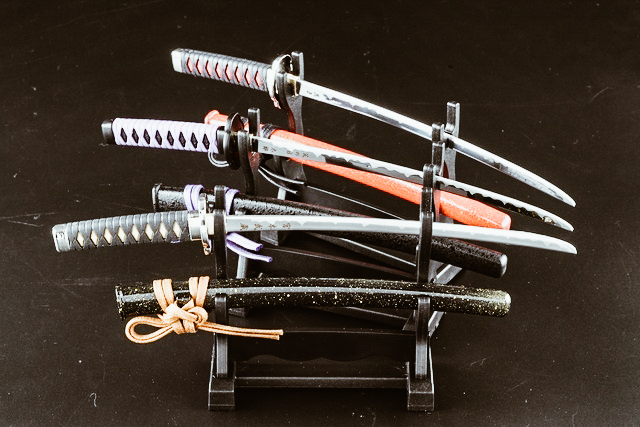
All sheaths are hand-painted by craftsmen, so each of them will be unique, as the blades are always created by Seki craftsmen. Each blade will have a very tapered edge but don't worry, they are specially designed not to cut human skin. It is not a real weapon, be quiet warriors! In addition, the blade is carefully hardened with a heat treatment that uses traditional blacksmith techniques and makes them resistant.
In case you are interested in the very personal engraving, these are made on the blade near the hilt and they can be names, messages, given all within eight kanji, hiragana and katakana characters or 15 Roman letters and numbers including spaces.

Don’t miss the opportunity to dress your day with Japanese tradition, rely on Nikken Cutlery!
For more information on these products: Nikken Cutlery official site | Twitter
TENOHA &| TASTE: it's Tanabata time
We can come back to love each other in compliance with the rules with the TANABATA aperitivo at TENOHA Milano! Summer has already begun and what better way to start again than by celebrating the Japanese Star Festival? As always, TENOHA makes your journey to Japan lighter and it always makes you feel part of the Rising Sun, thanks to its events and its food prepared especially for you by true Japanese chefs. By popular demand, the special TANABATA aperitivo is back again this year!
E' tempo di Tanabata da TENOHA Milano
Autore: SaiKaiAngel

Are you feeling more Vega or Altair? We know that you want to dream and cross the Milky Way to meet your loved one, but also to write your desire to see it come true. Here at TENOHA Milan you can do it! Write your wishes on the Tanzaku (those wonderful colored sheets of paper fluttering attached to the bamboo branches) and then see it dance in the wind among the leaves of the bamboo tree.
Because Tanabata (七夕 "seventh night") is the feast of the stars in love, a romantic feast that if TENOHA Milan weren't there you could only celebrate in Japan. But luckily, TENOHA Milan exists and it is that corner of Japan that you have always wanted. Live a romantic story, special days, feel Vega or Altair and come here to TENOHA Milan!
Ok the romance, but do we want to talk about what you can taste during TANABATA?
TENOHA Milan prepared for you 1 Drink + Aperitif box + Takoyaki (Japanese octopus meatballs) complete with show cooking + Kakigori (Japanese granita) All accompanied by Asahi Beer 20 ml.
Information
Where: TENOHA MILANO Via Vigevano, 18, 20144 Milano
When: From July 7th to 12th from 18.00 to 20.30
Cost: 12€
Event powered by Asahi Super Dry
Reservation is preferable, here you can find the phone number and email to reserve your seats: (+39) 02 8088 9868 | taste@tenoha.it
For more information: https://www.tenoha.it/events/aperitivo-tanabata/







